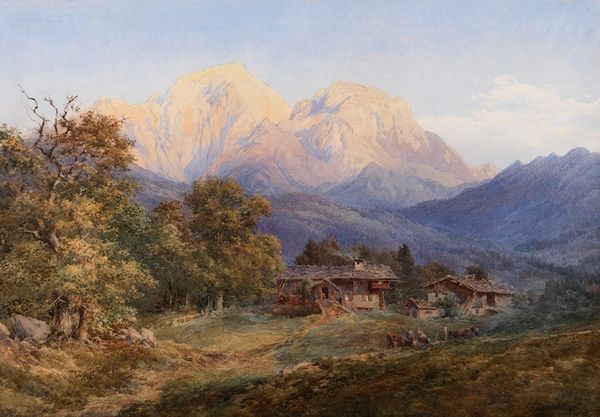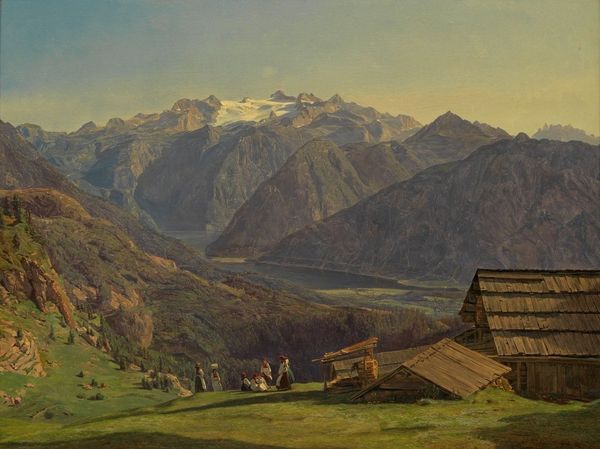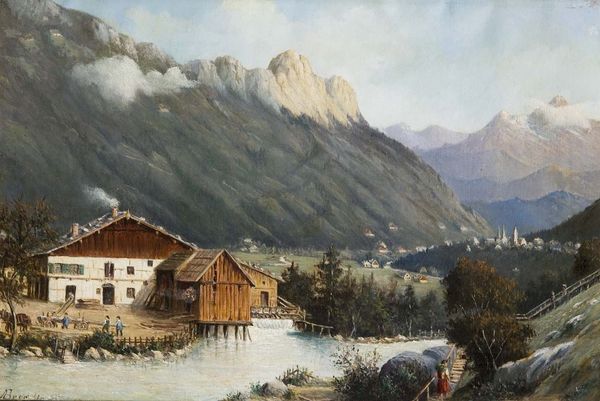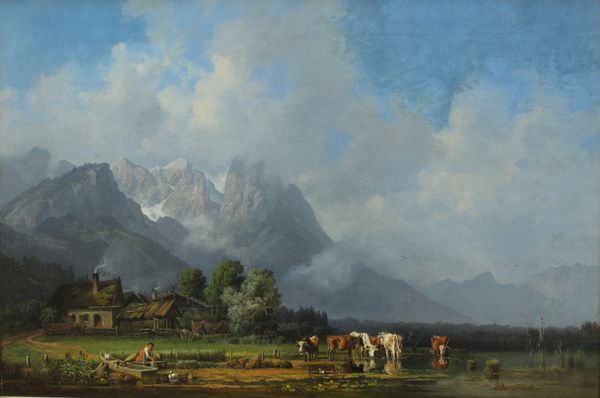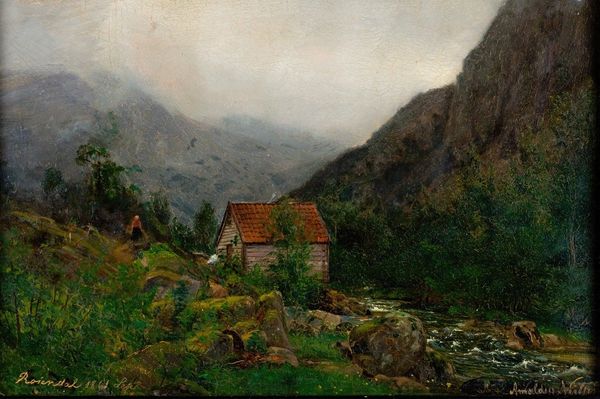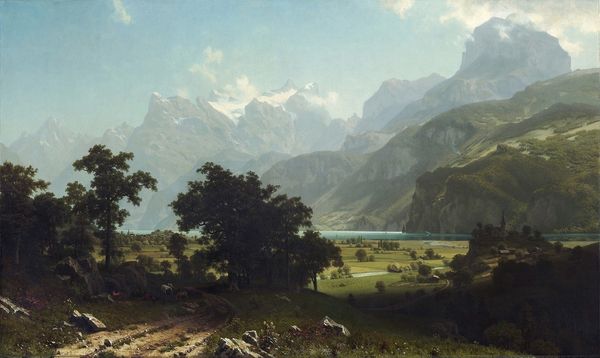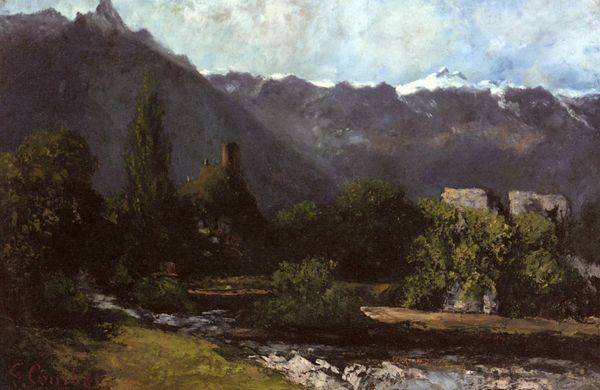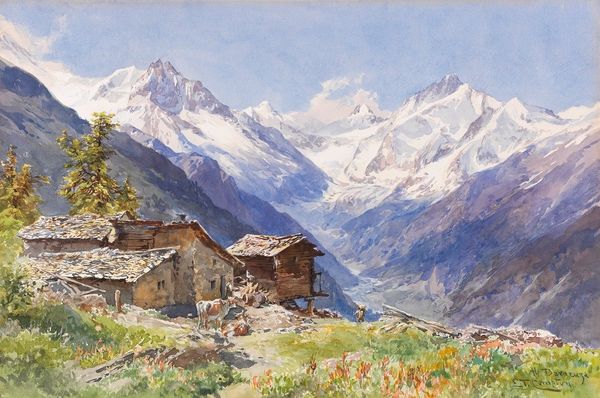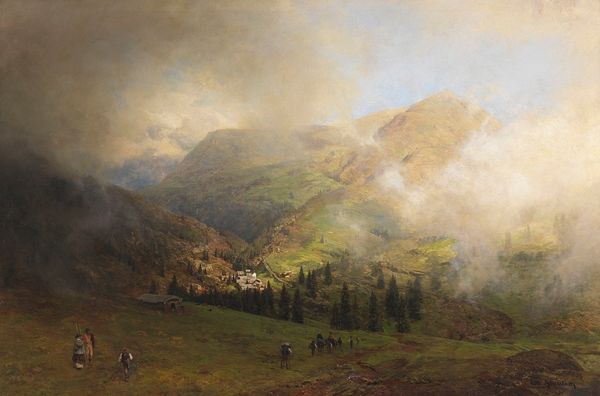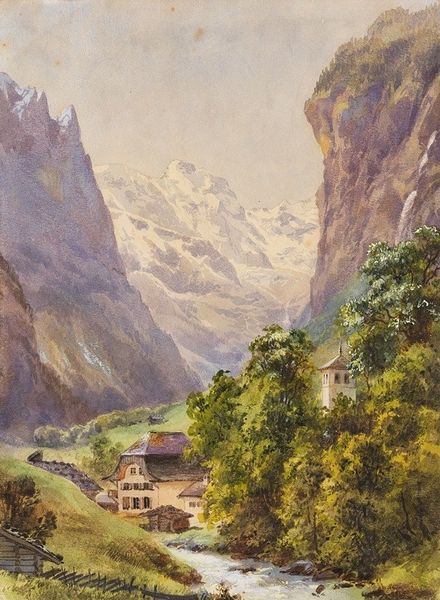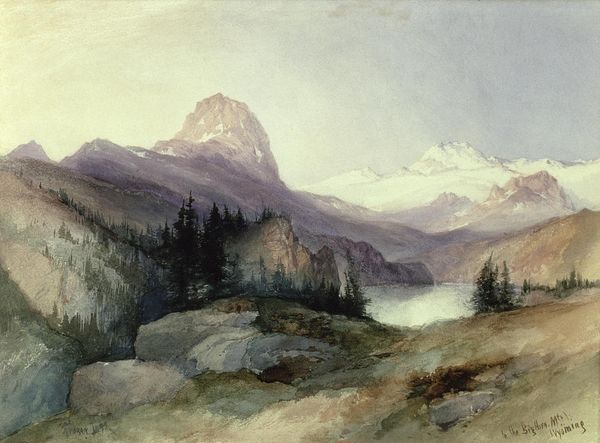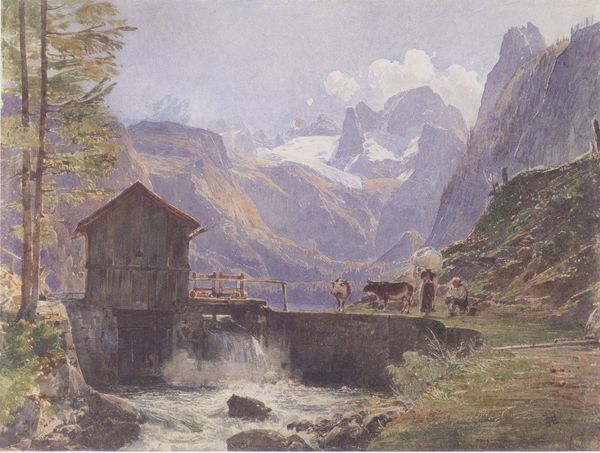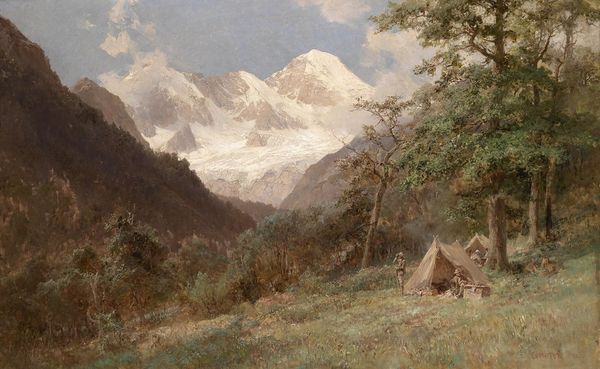
painting, oil-paint
#
painting
#
oil-paint
#
landscape
#
oil painting
#
romanticism
#
academic-art
#
realism
Copyright: Public domain
Editor: Looking at "An Alpine Village," an oil painting by Hermann Ottomar Herzog, I'm struck by the seemingly harmonious coexistence of the tiny village against the monumental mountain range. It’s a picturesque scene, but also feels a little... curated, you know? What are your thoughts on this work? Curator: It's a carefully constructed landscape, definitely. But let’s consider what the ‘picturesque’ meant in the 19th century, when Herzog was working. This wasn’t just about pretty scenery. The rise of industrialization brought with it new ways of perceiving the countryside, as a kind of retreat, or a site of resistance. To what extent might the emphasis on rural life mask anxieties about social and economic change? Editor: So, this isn’t just about capturing natural beauty. There is this subtle commentary maybe. The villagers appear self-sufficient and untouched by industry. The small cottages juxtaposed with majestic mountains... does this reinforce some power dynamic? Like nature as the ultimate force? Curator: Absolutely. The positioning of the village in the landscape could speak to humankind’s place in nature. Are they in harmony or in competition? How do we negotiate the growing human footprint, industrial expansion, and colonial influence on what we understand as the ‘natural world’? Editor: That makes me see this idyllic image very differently now. I’d assumed it was simply celebrating the alpine landscape, but there are more complex socio-political ideas woven into this composition. I was not conscious of this kind of anxiety around rural change reflected through art of the time. Curator: Exactly. Art can reveal complex dialogues between social concerns and artistic expression. Let us look at what is not presented and ask why this might be so!
Comments
No comments
Be the first to comment and join the conversation on the ultimate creative platform.
